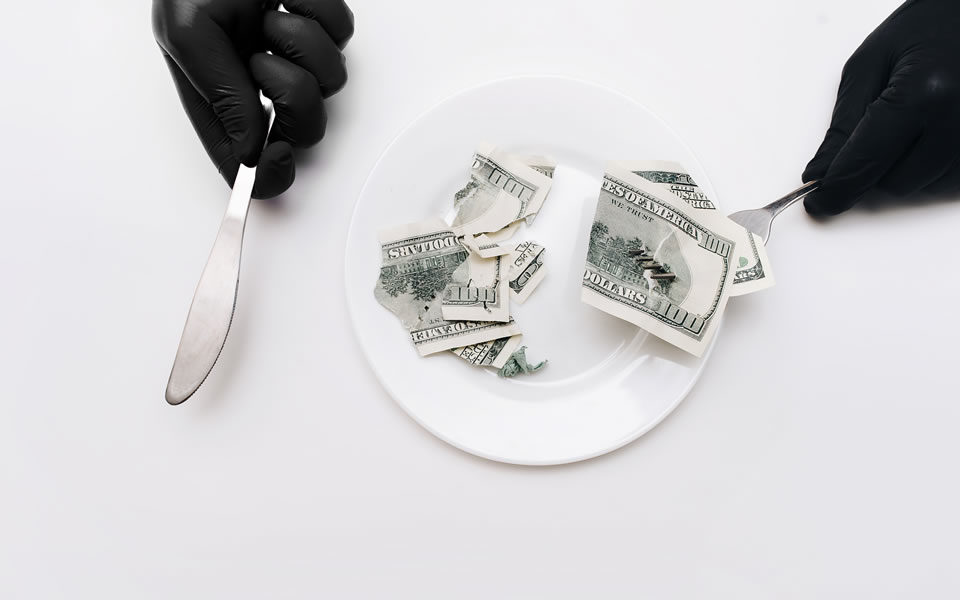There is no debating the hospitality industry is still struggling to return to pre-COVID-19 pandemic status. While customers have returned to restaurants, many employees have not. According to the National Restaurant Association, staffing levels steadily increased throughout 2021, but as of September 2021, nearly four out of five restaurants remained understaffed. In this environment, increased stress and pressure on existing restaurant staff not only leads to burnout — it could also lead to the decision to commit fraud.
Fraud and theft are prevalent issues in the restaurant industry. Coupled with short staffing and high employee turnover, fraud can strike a crippling blow. Owners and managers need to monitor their restaurants closely to avoid falling victim. There are two main ways employees can inflict financial harm to a restaurant: theft of product and theft of money. Likewise, there are two ways owners and managers can reduce their exposure to theft: know your staff and know your operations.
Knowing your staff goes beyond performing a credit or background check before you hire employees. Taking the time to know your employees on a personal level can help you identify suspicious behavior.
These red flags could be the initial warning signs of fraudulent activity:
- Living beyond their means: Is your employee buying expensive cars and jewelry or going on lavish vacations?
- Sudden financial difficulties: Does an employee mention financial hardships? Could addiction be behind a sudden need for funds?
- Unusual actions: Does the employee seem suspicious or anxious? When confronted, does the employee appear overly defensive?
- Excessively controlling: Do you have an employee who is unwilling to share job duties or always insists on handling register or disbursement duties?
- Relationships: Do you have an employee who appears to be unusually close with certain customers or vendors? Could these relationships be tied to theft of product?
- Family life: Are there stressful issues in an employee’s family, such as divorce or other personal turmoil, which could lead to fraudulent behavior?
Together with business savvy, identifying red flags like these can help you avoid falling victim to fraud. Conducting a financial analysis of your business is the next step in identifying and preventing fraud.
Knowing your business is about more than balancing your checkbook. Understanding and calculating the cost of goods sold in your restaurant is crucial to your success. Full knowledge of your restaurant’s costs helps you properly assess your menu pricing strategy and the sales required to achieve profitability. You should know your cost of goods sold percentage and gross margin percentage so you can make informed decisions about overhead expenses (e.g. rent). Unexplained increases in cost of goods sold percentages could indicate theft of food, beverages, or other goods. The cost of goods sold should vary in direct relation to sales. If sales fall, so should cost of goods.
Routine analysis of your financial statements can help you identify harmful trends before they cripple your business. By converting numbers on your financial statements to percentages, you can compare your business’s performance over time or to competitor restaurants. Financial statement analysis includes percentage analysis and ratio analysis. There are two traditional methods of percentage analysis: vertical and horizontal.
Vertical analysis examines the relationship between items on the financial statement in one reporting period. The analysis reveals a relationship between financial components (expressed as percentages) that can be compared across periods. In a vertical analysis of an income statement, net sales are assigned 100% as the baseline. In a vertical analysis of a balance sheet, total assets are 100% under the asset side and total liabilities and equity are also 100%. All other items above these numbers in the financial statement are expressed as percentages of sales or assets. Vertical analysis is useful for comparing against other restaurants in your vertical to gain a better perspective on your efficiency.
Horizontal analysis, on the other hand, allows you to compare items from period to period. The initial period is used as the baseline and changes in subsequent periods are expressed as a percentage of the baseline. In the example income statement analysis below, for instance, you can see that from year one to year two, this business recorded an 80% improvement on net sales.
The following is an example of vertical and horizontal analysis of an income statement:
(Association of Certified Fraud Examiners, 2021)
| Income Statement
|
Vertical Analysis
|
Horizontal Analysis
|
||||
|---|---|---|---|---|---|---|
Year One |
Year Two |
Change |
% Change |
|||
| Net Sales | $250,000 |
100% |
$450,000 |
100% |
$200,000 |
80% |
| Cost of Goods Sold | $125,000 |
50% |
$300,000 |
67% |
$175,000 |
140% |
| Gross Margin | $125,000 |
50% |
$150,000 |
33% |
$25,000 |
20% |
| Operation Expenses | ||||||
| Selling Expenses | $50,000 |
20% |
$75,000 |
17% |
$25,000 |
50% |
| Adminiatrative Expenses | $60,000 |
24% |
$100,000 |
22% |
$40,000 |
67% |
| Net Income | $15,000 |
6% |
($25,000) |
-6% |
($40,000) |
-267% |
As illustrated above, the vertical analysis of the income statement calculates the components of total sales (such as cost of goods sold or operating expenses, broken down by selling and administrative expenses), whereas the horizontal analysis reveals the percentage change across the two periods. In the above horizontal analysis example, there is a 140% increase in cost of goods sold, but net sales only increased by 80%. This is an unusual increase and should raise suspicion. The percent change in cost of goods sold should increase or decrease in direct relation to sales.
Ratio analysis allows for comparison against restaurant industry averages. You should research changes in specific ratios in detail to determine if fraud has occurred. If an employee is embezzling, for instance, cash will decrease disproportionately. Useful ratios for restaurant leaders to analyze include profit margin ratio, inventory turnover, food costs to total costs, and current ratio.
Profit margin ratio is net income divided by net sales. In the above example, the profit margin ratio is already calculated under net sales in the vertical analysis. Net income dropped from 6% in year one to -6% in year two. This might reveal fraud of inventory or unreported sales.
The inventory turnover ratio is calculated by dividing the cost of goods sold by the average cost of inventory. For perishable food, managers can monitor this ratio to better understand whether they are maintaining appropriate levels of inventory. If the inventory turnover ratio seems high or suddenly changes, it could be due to theft of inventory.
The ratio of food costs to total costs can be tracked for specific items or a category of items. For example, a restaurant may determine that steaks make up 20% of its food costs but only 10% of sales. This metric is useful in determining profitable items on the menu or identifying areas of fraud. Current ratio is determined by dividing current assets by current liabilities. This ratio measures a restaurant’s ability to meet short-term liabilities using its liquid assets. Embezzlement will cause this ratio to decrease over time.
Restaurant managers should also have a thorough understanding of daily transactions and daily procedures. Managers should monitor transactions and review reports on refunds, canceled transactions, or other discounts applied. Managers can also compare different shifts to identify trends that might suggest employees are refunding meals for family or friends. Review procedures to ensure cashiers and waiters must obtain authorization for customer refunds or voids. Undercharging can occur when a customer orders a more expensive item, but the employee rings it up as a cheaper item. Compare point of sale reports to back of house tickets to ensure all food prepared on a ticket was entered into the POS system. You can also monitor employee activity with security cameras.
Employee fraud should be a major concern for restaurants. Fraud significantly cuts into profitability, jeopardizing a restaurant’s success. By identifying red flags and using financial analysis and protocols to reduce fraud risk, restaurants can remain open for business.









